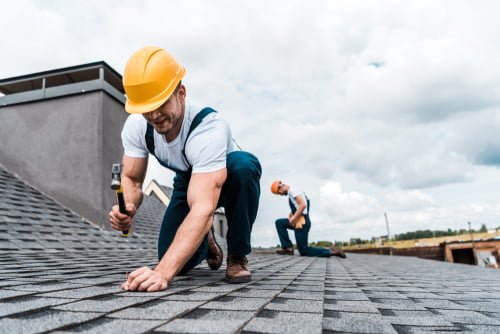How Interest Rate Buy-Downs Can Lower Your Monthly Payment
In today’s real estate market, characterized by persistently high interest rates, offering seller financing incentives or cash-back for home repairs can make a property stand out. It can do this by addressing potential buyers’ concerns directly, leading to a faster sale. These strategies can be more effective than price reductions. They provide tangible benefits to buyers, such as saving on private mortgage insurance or reducing the initial financial burden of purchasing a home .
Many prospective homebuyers are concurrently exploring avenues to lower their interest rates without significantly increasing their upfront closing costs. One such avenue that garners attention are seller financing incentives like the interest rate buydown. Let’s delve into what exactly interest rate buydowns entail .

What is an Interest Rate Buydown?
An interest rate buydown is a type of financing incentive involving the buyer, the seller, and a preferred lender. It is aimed at reducing the interest rate on a mortgage either temporarily or permanently. This is accomplished by the seller and lender contributing a specified sum of money as a credit to the buyer at the time of closing. This credit is then utilized to decrease the interest rate on the mortgage.
Types of Interest Rate Buydowns
Temporary Buydowns:
Temporary buydowns are favored by buyers with exceptional credit and adequate income to qualify for a home loan. These buydowns typically result in a more significant reduction in the interest rate during the initial 1-3 years of the mortgage term. Buyers opting for temporary buydowns anticipate refinancing their mortgage in the future when interest rates are more favorable. However, it’s crucial to note that they must still qualify for the loan at the higher interest rate that will come into effect once the temporary buydown period concludes.
Permanent Buydowns:
Permanent buydowns are available to all buyers, including those with less-than-perfect credit. This type of buydown enables homeowners to lower their interest rate sufficiently to make a notable difference in their monthly payments. One of the primary advantages of a permanent buydown is the assurance of consistent payments throughout the homeownership journey, without the necessity of refinancing in the future even if credit and income circumstances change. However, it’s important to acknowledge that permanent buydowns can incur substantial costs. It’s crucial to weigh the expense of a buydown when considering this option. Depending on the property’s pricing, a permanent buydown might not be financially feasible as it could significantly inflate the overall loan cost.
Should you get a buy-down?
Interest rate buydowns can serve as an effective strategy for homebuyers aiming to reduce their interest rates without substantially increasing their closing costs. Temporary buydowns suit buyers with excellent credit who plan to refinance down the line, whereas permanent buydowns offer the advantage of stable payments over the homeownership duration. However, it’s imperative to meticulously assess the costs and benefits of buydown options and seek guidance from a trusted lender and real estate partner to determine the most suitable approach for individual circumstances.
At Adam Timothy Group, we believe smart real estate decisions start with understanding how the market—and your monthly payment—is shaped by more than just the price tag. Whether you’re buying your first home or your fifth, we’re here to help you navigate shifting interest rates, make the most of your budget, and secure a home that fits your life today and your goals for tomorrow.
Let’s talk about your next move—reach out anytime.

Keep Austin Full of People Who Love It
We don’t just buy and sell homes. We build community by helping clients find their place in the world.
Timothy Powles and Adam Stanley work together on the Adam Timothy Group at Compass RA and manage AT Real Estate Group LLC, a rental and vacation property investment business. We are about building community. We believe a real estate transaction is an important and extremely significant event but relationships last a lifetime. Our clients, partners, and friends trust us to get to know their story and what is most important to them. And we work tirelessly to retain that trust.



